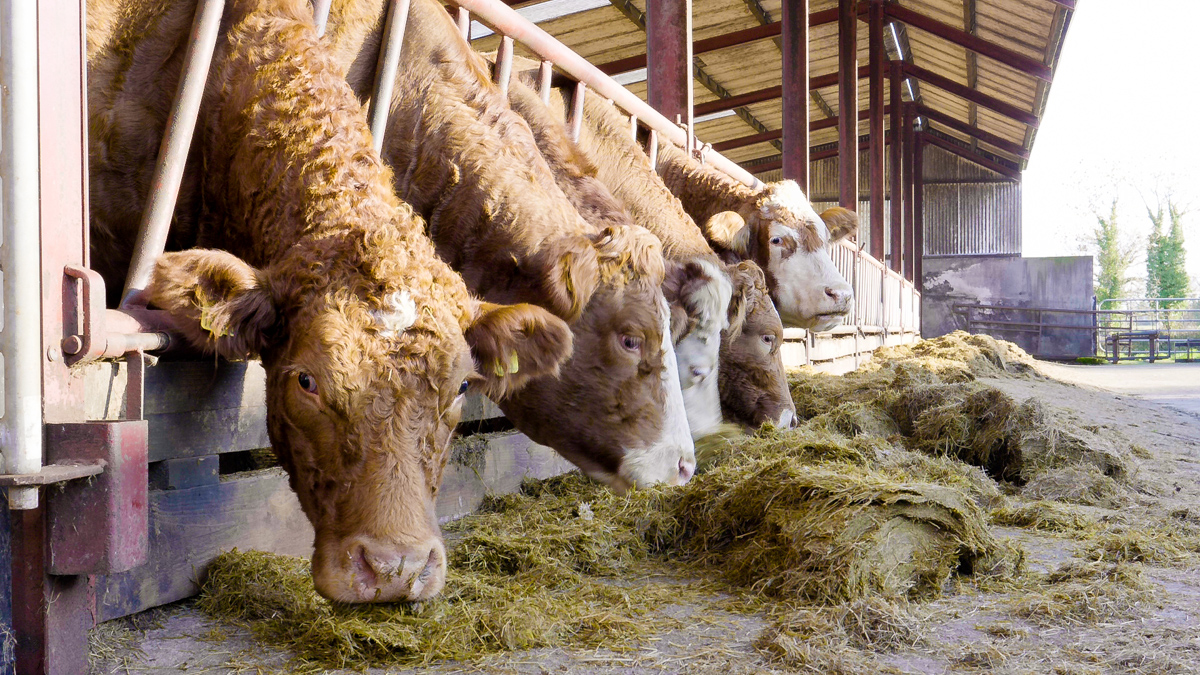Although grass is not in short supply on most moderately-stocked beef farms, as October rolls on and wet weather conditions take hold, beef farmers should have their sheds ready for cattle to be housed at short notice.
As the grazing season draws to a close in the coming weeks, it’s a good idea for beef farmers to have a plan in place as how to best manage their cattle – whether that be cows, weanlings, stores or finishing stock.
Winter housing is a costly time on a beef farm but the benefits of housing cattle at the right time can be enjoyed the following spring, when farmers have paddocks of fresh grass on fields that have not been tramped or poached over the winter.

Farmers should also pay careful consideration to the size of the sheds available, as overcrowding can lead to a significant reduction in animal performance over the winter.
According to Teagasc, suckler cows housed in slatted houses require 2.5-3.0m²/cow, while cattle weighing over 275kg require 2.0-2.5m²/animal.

Weanlings or cattle weighing under 275kg are required to have 1.2-1.5m²/animal.
Lighter animals (under 275kg) that are housed in straw-bedded sheds, require 2.4-3.0m²/animal; heavier cattle (over 275kg) need 4.0m²/head.
In order to get the best liveweight gain from your cattle over the winter months, it is advisable to group animals in accordance with weight.
This will stop heavier animals bullying lighter animals for space at the feed face. In addition, significant gains can be made in finishing enterprises when all of the animals in a group are the one size.
In spring-calving enterprises, dry cows should be grouped on the basis of body condition score (BCS).
This allows for each cow’s intake to be monitored and to reduce the incidences of difficult calvings next spring.
Along with an adequate feed space, cattle should always have access to fresh, clean water at all times.
Farmers should ensure that there is a continual flow of fresh air throughout the shed but – in doing this – should also ensure draughts should be kept to a minimum to prevent cattle from getting chills.
If a farmer is concerned about a shed’s air circulation, simple modifications, such as spacing out some of the side sheeting of sheds, can help circulate air around the shed.
Needles to say, animals perform better in well-ventilated sheds and weanlings in particular, are less likely to develop respiratory infections, i.e. pneumonia, when housed in a well-ventilated shed.
